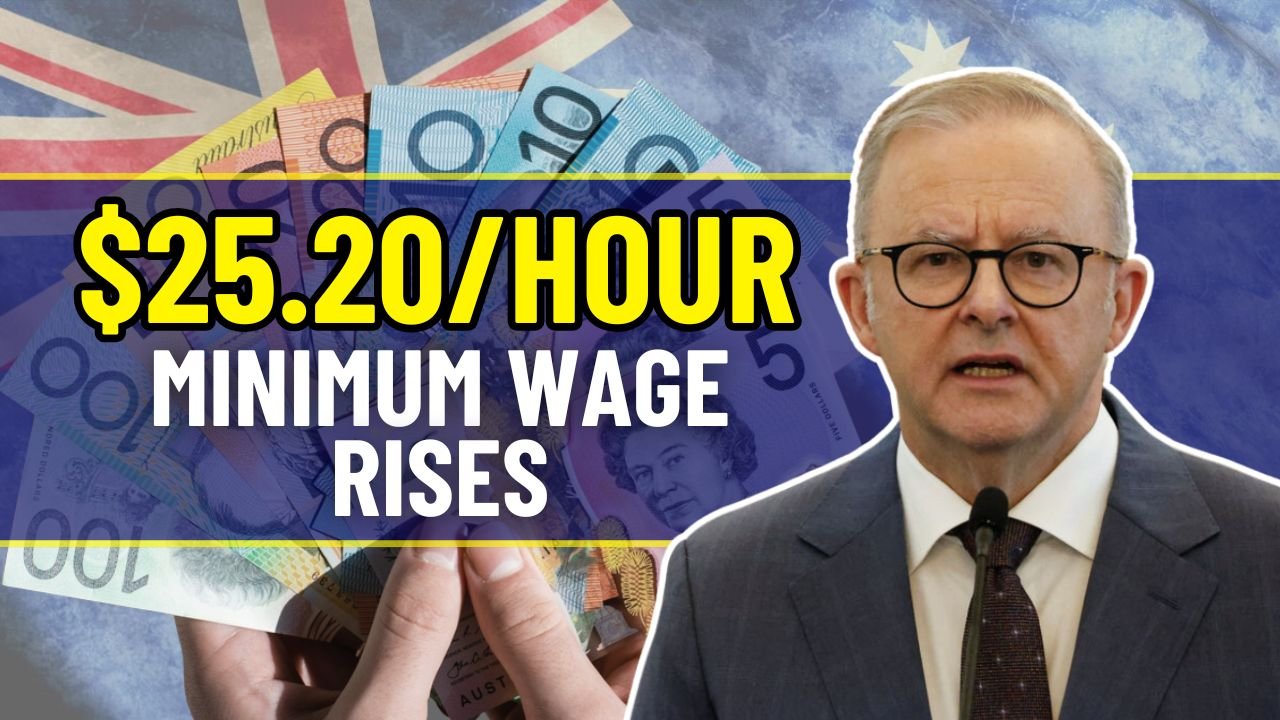The Australian Government has confirmed an increase in the national minimum wage effective from November 2025. This decision aims to help workers manage inflation and the growing cost of living. The adjustment will also affect Centrelink payments, as income thresholds and welfare tests are being updated in line with the new wage levels.
The Reason for the Increase in the Minimum Wage
The Fair Work Commission reviews the minimum wage each year to ensure it keeps pace with inflation and living expenses. In 2025, the prices of essential goods such as food, rent, and electricity rose sharply. By raising the minimum wage, the government intends to protect workers’ purchasing power and reduce financial pressure on low-income households.
The Effect on Centrelink Payments
The wage increase will directly influence Centrelink benefits, including JobSeeker, Parenting Payment, and Family Tax Benefit. Since these payments are income-tested, the limits have been adjusted to prevent workers from losing welfare eligibility due to higher wages. This ensures that the welfare system continues to supplement earnings instead of penalizing employment.
New Minimum Wage Rates for November 2025

| Category | New Rate (from Nov 2025) |
|---|---|
| National Minimum Wage | AUD 25.20 per hour (up from AUD 24.10) |
| Weekly Full-Time Rate | AUD 955.00 for a 38-hour week |
| Casual Loading | 25% additional, raising hourly rate to AUD 31.50 |
Advantages for Workers and Families
- Full-time minimum wage workers will earn around AUD 50 more each week.
- Families will experience more breathing room in managing essentials like groceries, transport, and rent.
- With updated Centrelink income thresholds, lower-income Australians will continue receiving financial assistance even after the wage rise.
Why This Matters
The November 2025 wage increase is more than just a pay adjustment it reflects the government’s effort to maintain fair and livable wages. By aligning welfare income tests with new wage standards, the government ensures that working individuals are not disadvantaged for earning more. This move also strengthens the social safety net, supporting both workers and welfare recipients.
Economic Impact
This change will likely boost spending among low-income earners, stimulating local economies. Employers may face slightly higher costs, but overall, the wage increase contributes to a more balanced and inclusive economy. It signals the government’s intent to protect workers from falling behind as living costs rise.
The minimum wage rise to AUD 25.20 per hour in November 2025 marks a significant step forward for Australia’s workforce. By increasing both hourly and weekly earnings and updating Centrelink thresholds, the government reinforces its commitment to fairness, economic stability, and social equality. Workers and families alike will benefit from this move toward a more secure financial future.
FAQ
Q1. When will the new minimum wage take effect?
The new minimum wage of AUD 25.20 per hour will be implemented starting November 2025.
Q2. How much more will full-time workers earn per week?
Full-time employees will earn approximately AUD 50 more per week under the new rate.
Q3. How does this affect Centrelink payments?
Centrelink’s income thresholds and payment tests will be adjusted to ensure that recipients are not penalized by the wage increase.
Q4. What is the new casual loading rate?
The casual loading remains at 25%, increasing the casual hourly rate to AUD 31.50.
Q5. Why did the government decide to raise the wage?
The rise was introduced to combat inflation, support workers’ financial stability, and help low-income families manage essential expenses.



